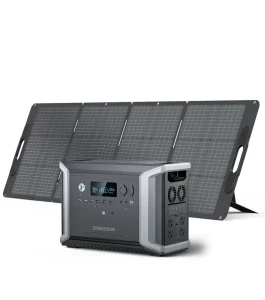Essentially, a portable power station is energy stored in a rechargeable battery that you use to increase your energy reserve and can be used to power different things. These portable power stations come in various battery sizes, measured by Watt-hours (Wh) and typically use lithium-ion batteries which have a high energy density and are expected to last well into the thousands of charge cycles. Technically it works as a charging station, supporting wall outlets and even using solar panels, so there are multiple ways users can replenish the battery.
When you plug a portable power station, then energy is stored in a battery and an inverter converts this stored energy to usable electricity. These household items run on alternating current the inverter converts the direct current (DC) stored in the battery for most everyday electrical use. Preferably also have a balanced electrical input since some energy will be converted to heat ( which means it was lost in power conversion), this process has an efficiency of about 85%. So a 500Wh power station can give you approximately 425 Wh of useable energy after conversion losses.
The power station has different charging ports including USB, AC and DC for multiple devicedidscharges at once. A 1,000Wh power station could keep a laptop (around 60W) going for around 16 hours or provide over 100 smartphone recharges. The 14.5-volt output also works on everything from small electronics to a mini-fridge or even electrical medical equipment, and yes—and RV A/C!

That assistance was needed in 2022 as Hurricane Ian took out wide swaths of the power grid for days. That said, the importance of a station that allows folks to continue running small essentials such as charging phones and turning on some lights should not be understated in disaster relief. Because as tech innovator, Elon Musk once said “Sustainable energy production and consumption is the key to our future. The Basic Idea Portable power stations allow for generating and consuming of electricity in a clean way.
Safety Portable power stations, including this one, are complete with features that make the device safe to use, such as overcharge protection, short circuit protection and temperature control. With a general average of 500 to 2,000 charge cycles during its life span (this varies depending on the model), it can help you monitor your battery even better. Don't hesitate to do some preventive maintenance such as charging the station every three to six months and avoiding extreme temperatures.
If we know how a portable power station work, we can make the most of its benefits for emergencies or outdoor activities. For further consideration, kindly navigate to the Portable Power Station page for more experience of the newest models and personalities.